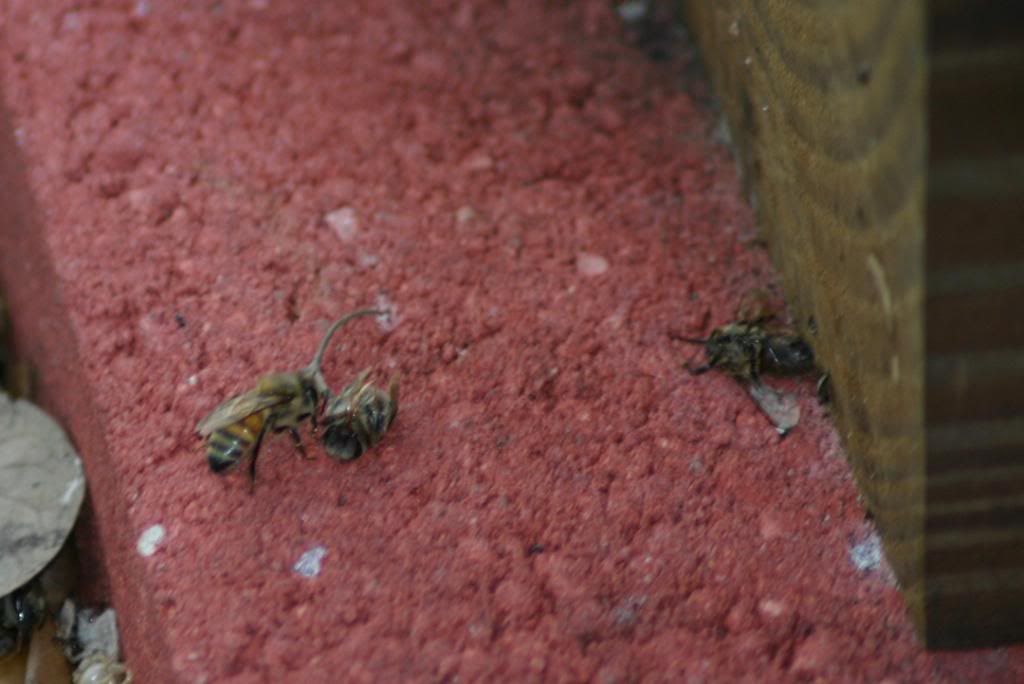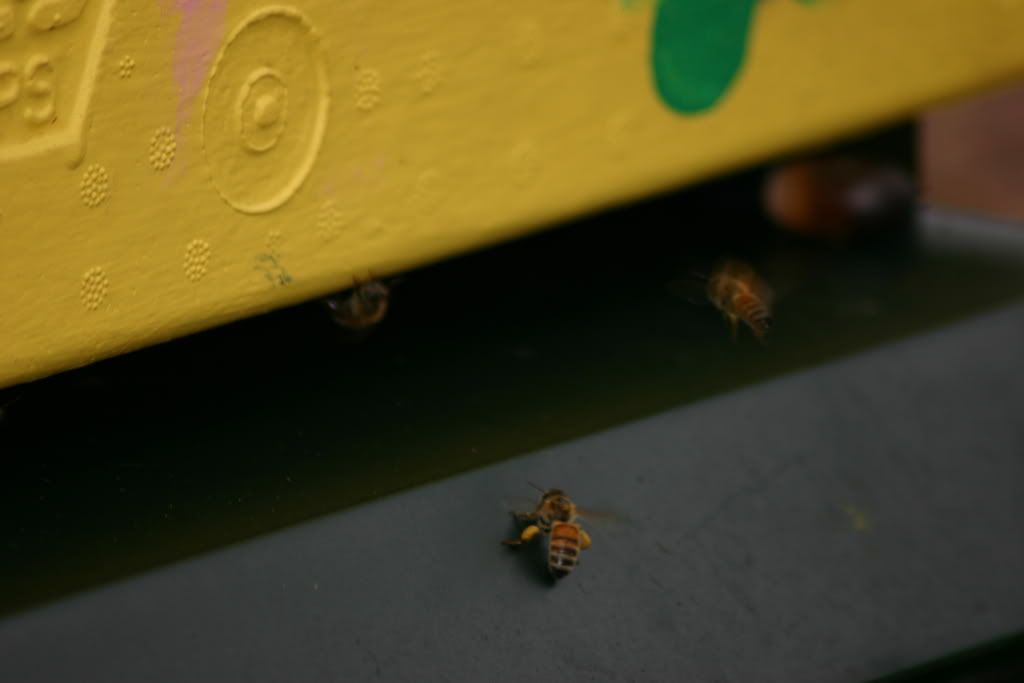The kids had the day off from school so I stayed home with them, and took advantage of my sort of free time to build my NUC. It took me all day to build a box, but at least it’s done. Well, for the most part, it still needs a few coats of paint. I need to look in the garage to see what sort of paint leftover’s I have.I could have worked on my TBH today but I’m going to need the NUC before I need the TBH…… why??? Spring is fast approaching in Central Florida. We may still get one or two more cold fronts, but they usually just last 2 or 3 days tops.These are my Azaleas and they just began their annual blooming. The odd thing about it is that the bees are completely ignoring these blooms. I remember in past years everyone at home staying away from them due to the bee, and bumble bee activity around them. I just don’t remember when the bees become interested in them, but eventually they do....... that much I’m sure of.


I video-taped the hive entrance for about 30 minutes today. Not a sign of drones, unless you count the dead ones by the entrance. Tons of pollen being brought in by the bees. As far as color there is dark yellow, white, and red color pollen.
So, here is the spring plan that begins this upcoming weekend.
- Let the bees clean the honey from the wax I saved from the last crush, and strain. This should begin my artificial flow.
- Place the feeder and continue feeding 1:1 sugar water once the bees clean the honey off the wax. Feeding for a total of 6 weeks.
- Got an Australian queen on order that is due to arrive the second week of March from Weaver Apiaries out in Texas.
In the second week of March I’m going to do a double screen split. A double screen split consists of placing the split/nuc above the parent hive (hive having been split), with a double screen in between them. The queen stays with the bottom hive, and you give the top enough resources and bees to survive until (A) they make a new queen or (B) they accept a new purchased queen. The goal of the double screen is to split the bees enough to convince them that they are now a new hive, but keep them close enough to allow them to regulate the environment of the dwelling. The two screens should be apart in a way where the bees can’t make physical contact. If, for whatever reason, the split fails the screen is removed and the hive is reunited.Here is the set up.
This is my Beemax bottom that I don’t use due to the scores of ants at my location. It originally comes with a screen bottom. So I made a frame, and placed a second screen.  Here is my 1st ever five frame NUC built from scratch. It’s not perfect, but it will do and it will hold. I won't point out my mistakes, but they are rookie and poor planning mistakes. Everything is glued and screwed together.
Here is my 1st ever five frame NUC built from scratch. It’s not perfect, but it will do and it will hold. I won't point out my mistakes, but they are rookie and poor planning mistakes. Everything is glued and screwed together.  All I will have to do is remove the top of my hive, put the split in the Nuc and place the entire set up on top of the hive with the Nuc’s entrance facing the opposite direction. Stay tuned for how good double screen splits work…
All I will have to do is remove the top of my hive, put the split in the Nuc and place the entire set up on top of the hive with the Nuc’s entrance facing the opposite direction. Stay tuned for how good double screen splits work…












